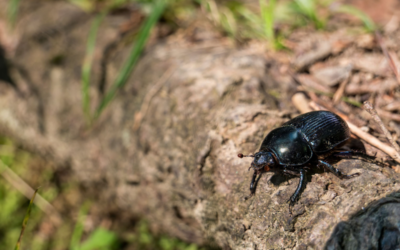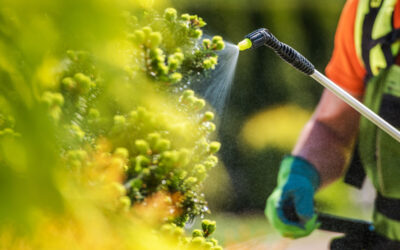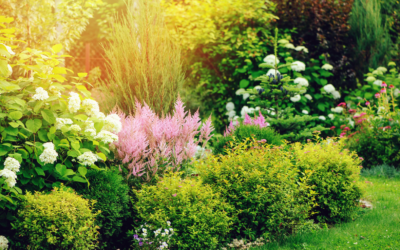The first weeks of fall are an important time for keeping your landscape in shape for winter and ready to wake up healthy and happy come spring.
Treat Your Turf
Cool season grasses like fescue, bluegrass, and ryegrass grow fastest in the fall before the temperatures plummet. They are the most common grasses in Colorado lawns and benefit from a fall application of fertilizer. As days become shorter and temperatures dip, grasses and other plants shift their food reserves to their roots, which remain active as long as the soil isn’t frozen. Applying a winterizing fertilizer before hard freezes set in gives the nutrients a chance to absorb into the soil where they’re taken up by the roots and stored to stimulate thick and healthy spring growth.
Don’t Overlook Trees and Shrubs
Trees and shrubs benefit from a little extra attention in the fall, too. Most well established plants have large enough root systems to draw nutrients from the winterizing fertilizer you put on the lawn, but their roots need water all winter long. Give them a good drink before the ground freezes and water them monthly during warm days to supplement snow melt or periods of winter dryness.
Mulching around the bases of shrubs and tender trees keeps the soil insulated and promotes moisture take-up by the roots. But keep a couple inches of clearance from the trunks to minimize the risk of pest and disease damage. Wait until daytime temperatures fall before mulching, and clean up any fallen leaves and other debris that can serve as hiding places for pests and disease. Then add 2-3 inches of loose, non-compacting mulch. Make your own from chopped fallen leaves or pine needles or buy shredded bark, chopped cornstalks, or straw from a garden center.
Baby Your Broadleafs
Broadleaf evergreens like euonymus, pyracantha, grape holly and boxwood are popular in Colorado for year-round color. Mulching and winter watering are important to keep their foliage colorful, and application of an antidessicant later in the year helps protect against our strong sunlight and dry winter winds. They do best in a sheltered location with filtered morning sun and afternoon shade. If they need to move, fall is the best time, as well as the time to add any new plants. Fall is also the time to transplant or add spring-flowering perennials before the soil freezes.
Reset You Irrigation
Keep watering as long as weather permits, but cut back to accommodate your lawn and plantings’ reduced needs (about half of peak summer amounts). Don’t forget to winterize your irrigation system before hard freezes set in and be sure to disconnect any hoses from hose bibbs to keep pipes from bursting. Keep hoses and soakers handy for hand watering during winter dry spells, though. And be sure your water garden is ready for winter, too. Pond fish need oxygen year-round, so use a pump strong enough to keep water running even during hard freezes.
Fall is Full of Bargains
Come fall, most garden centers are looking to clear out their summer inventory. Trees, shrubs, and perennials are heavily discounted, so it’s a great time to shop, especially for high-ticket items like trees, which, coincidentally, usually do their best when planted in fall. Limit your purchases to healthy plants from reliable sources and follow planting guidelines to avoid disappointment in the spring.
Enjoy the Fall Weather
Fall days are perfect for finishing up your winterizing chores. The exercise is good for you and gives your landscape a head start on next spring’s growing season.
And if you need some help, don’t hesitate to call in a pro. Donovan Arborists offers planting, pruning, and shearing services as well as a complete landscape maintenance package for property in the Denver area.
We’re always happy to give free estimates to homeowners and property managers for any services they may need.




